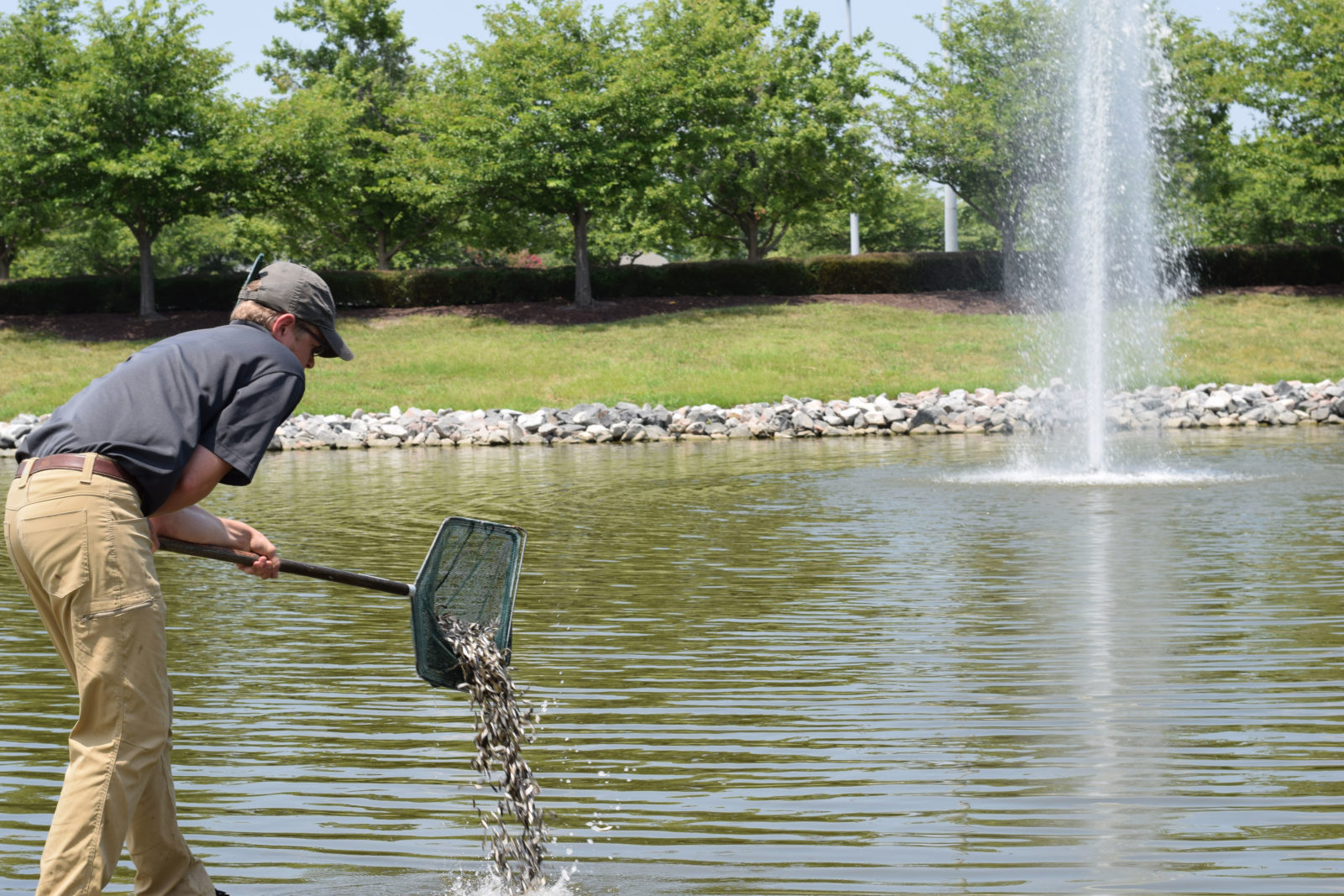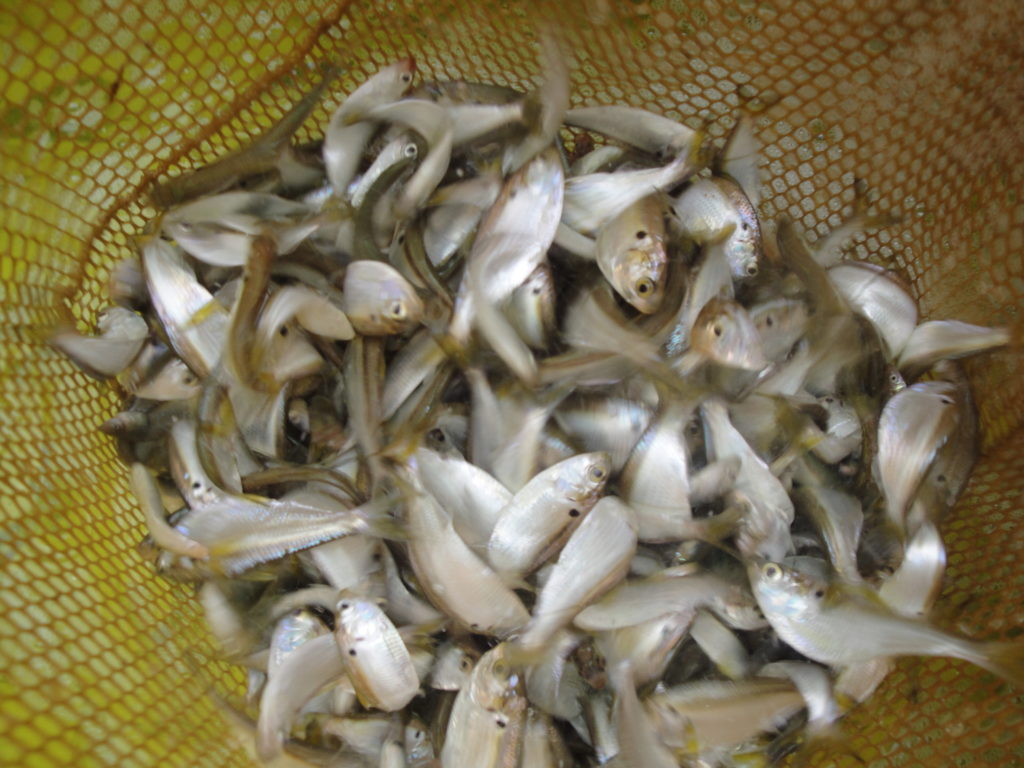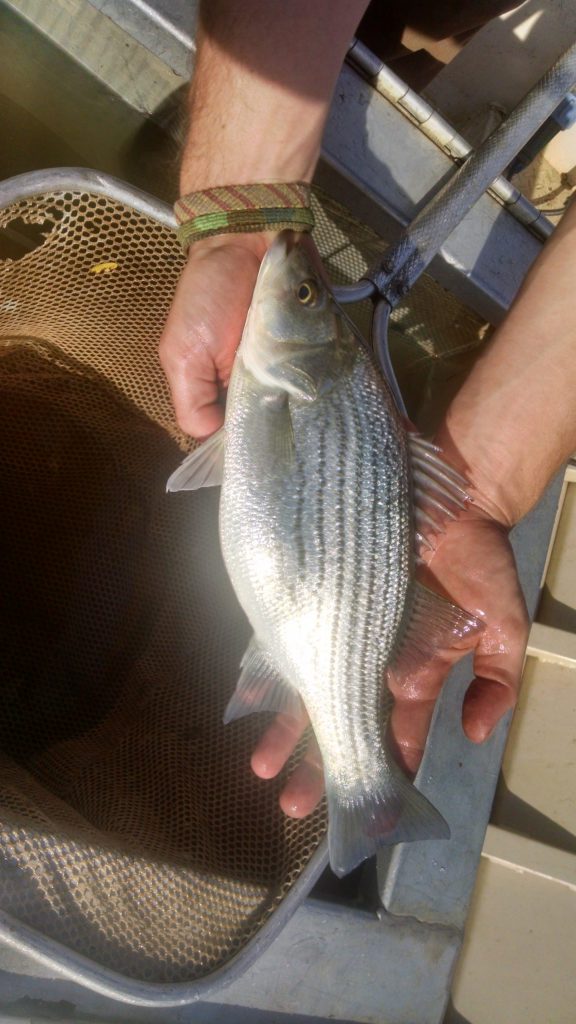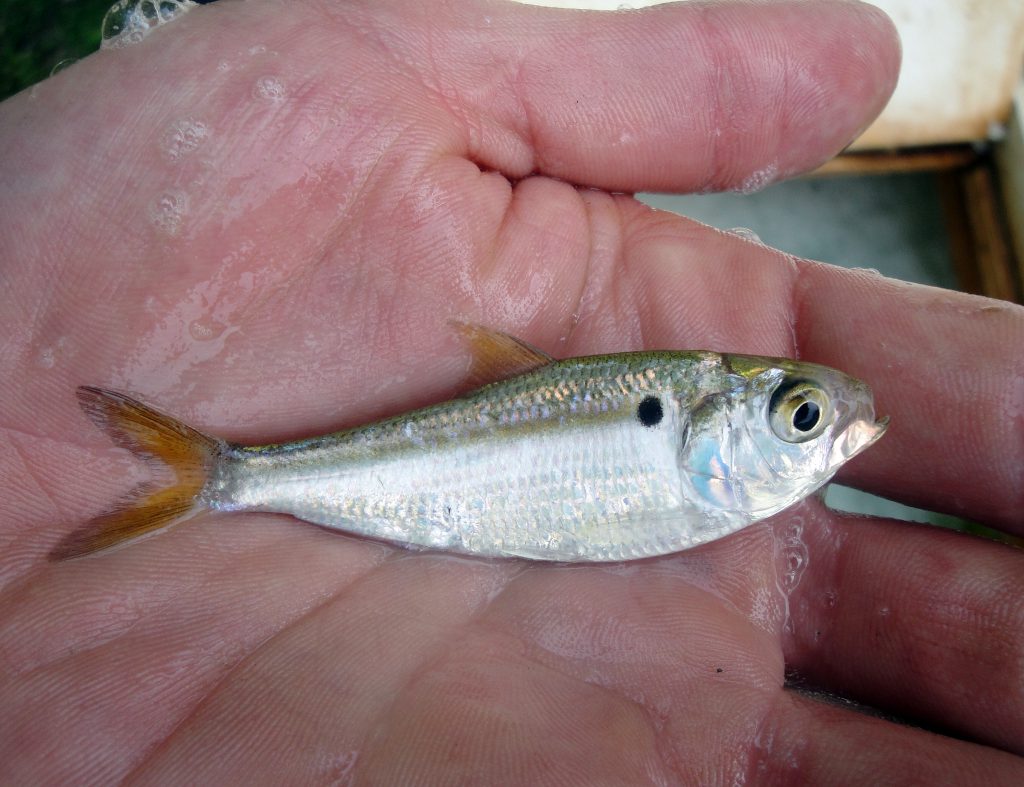

Should I Stock My Pond with Threadfin Shad?
When asked to choose my favorite species of fish, Threadfin Shad is always the first thing that comes to mind. Threadfin Shad play an incredible role in many fisheries as a prolific prey species and their high fecundity (ability to produce lots of offspring) makes them an especially attractive option for stocking. Not only do they occupy a unique ecological niche, but they can also provide an exciting angling experience by altering the behavior of predators.
Threadfin Shad are primarily pelagic, meaning they inhabit the open water, rather than the areas near the bottom or the shoreline. They travel throughout their environment in large schools—almost like a single organism—with rhythmic movements reminiscent of flocking birds. When pursued by predators, they will “pop” along the surface and easily lose bright silver, golden or blue-green scales into the water column, which causes further confusion to their pursuers, which include Hybrid Striped Bass, Largemouth Bass, and Crappie.

Hybrid Striped Bass are also pelagic fish, aligning their natural hunting style with the school-like nature of Threadfin Shad. Likewise, Largemouth Bass, which generally lie and wait for their prey near structure, will actually alter their feeding behavior to mirror that of Hybrid Striped Bass by following schools of Threadfin Shad in open water. These “schooling bass” are a favorite target for many anglers. Crappie, on the other hand, spend most of their time in deep water habitat and actually orient their bodies vertically in the water column. When a school of shad gets too close to an almost motionless Crappie, they dart out to attack. In spawning season, Threadfin Shad behavior is worthy of a nature show. They move in mass to deposit eggs and milt onto shoreline grasses. This typically occurs at first light in the spring when the water temperatures reach 72 degrees Fahrenheit. Large populations can cover acres of water surface, making it shimmer in waves as the school changes direction. The eggs adhere to the grass until they hatch within a few days. This frenzied spawning leads to a tremendous reproductive rate.
Fisheries Biologists typically stock a few hundred per acre in the spring which, given the right conditions, can quickly become hundreds of thousands or even millions. These conditions include spring water temperature, photoperiod (daily sunlight), the health of the plankton bloom, and the amount of shoreline grass coverage extending into the water.

If you are interested in stocking Threadfin Shad, it’s important to purchase them from a reputable dealer. Threadfin Shad are delicate and require careful handling and hauling at lower densities than other species. Inexperienced or unscrupulous fish providers may cause more harm by either stocking threadfins that will not survive or stocking the wrong species entirely. Young Gizzard Shad can be easily confused with threadfins. While Gizzard Shad play a role in some fisheries, they can also be detrimental if stocked into the wrong environment. Gizzard Shad will outgrow the mouth width of most predators and the large, unattainable adults can become overpopulated competing for oxygen and space within your waterbody. They can also contribute to turbidity issues in some lakes that are predisposed to this problem.
Another consideration when stocking Threadfin Shad is the region. Threadfin Shad are cold intolerant and, generally, cannot handle water temperatures below 40 degrees Fahrenheit. This makes them a more appropriate fit for southern lakes and ponds. Even when they do not succumb to cold temperatures, they move much slower in winter months making them easier prey for predatory fish and fish-eating birds. While your bass may gain tremendous weight from gorging themselves on shad, it is disconcerting to watch a flock of cormorants consume baitfish you worked to provide for your bass. For these reasons, Threadfin Shad should be stocked in the spring to ensure their continued survival.
Finally, since Threadfin Shad solely feed on plankton throughout their lifespan, managing your fishery’s plankton bloom through fertilization may prove vital to their long-term success. If a bloom is not present, your lake will not experience the population explosion for which Threadfin Shad are known. Few waterbodies naturally exist with ideal blooms, so it is common to supplement through fertilization; however, poorly timed or executed fertilization can be destructive. By working with a qualified fisheries biologist, you can ensure your fertilization efforts are productive without experiencing nuisance levels Aof algae and vegetation.
Contact the experts at 888-480-5253 for all of your lake, pond, wetland, and fisheries management needs.
SOLitude Lake Management is a nationwide environmental firm committed to providing sustainable solutions that improve water quality, enhance beauty, preserve natural resources and reduce our environmental footprint. SOLitude’s team of aquatic resource management professionals specializes in the development and execution of customized lake, pond, wetland and fisheries management programs that include water quality testing and restoration, nutrient remediation, algae and aquatic weed control, installation and maintenance of fountains and aeration systems, bathymetry, mechanical harvesting and hydro-raking, lake vegetation studies, biological assessments, habitat evaluations, and invasive species management. Services and educational resources are available to clients nationwide, including homeowners associations, multi-family and apartment communities, golf courses, commercial developments, ranches, private landowners, reservoirs, recreational and public lakes, municipalities, drinking water authorities, parks, and state and federal agencies. SOLitude Lake Management is a proud member of the Rentokil Steritech family of companies in North America.









